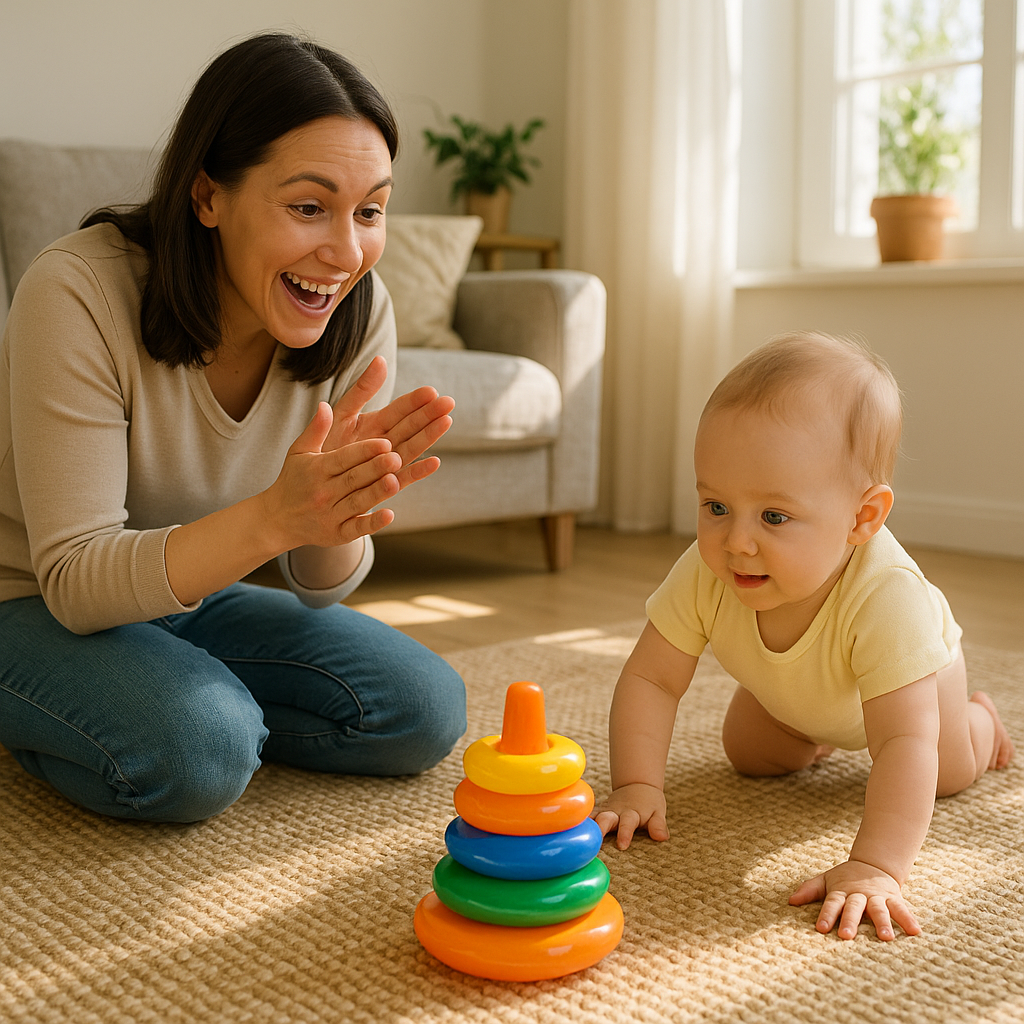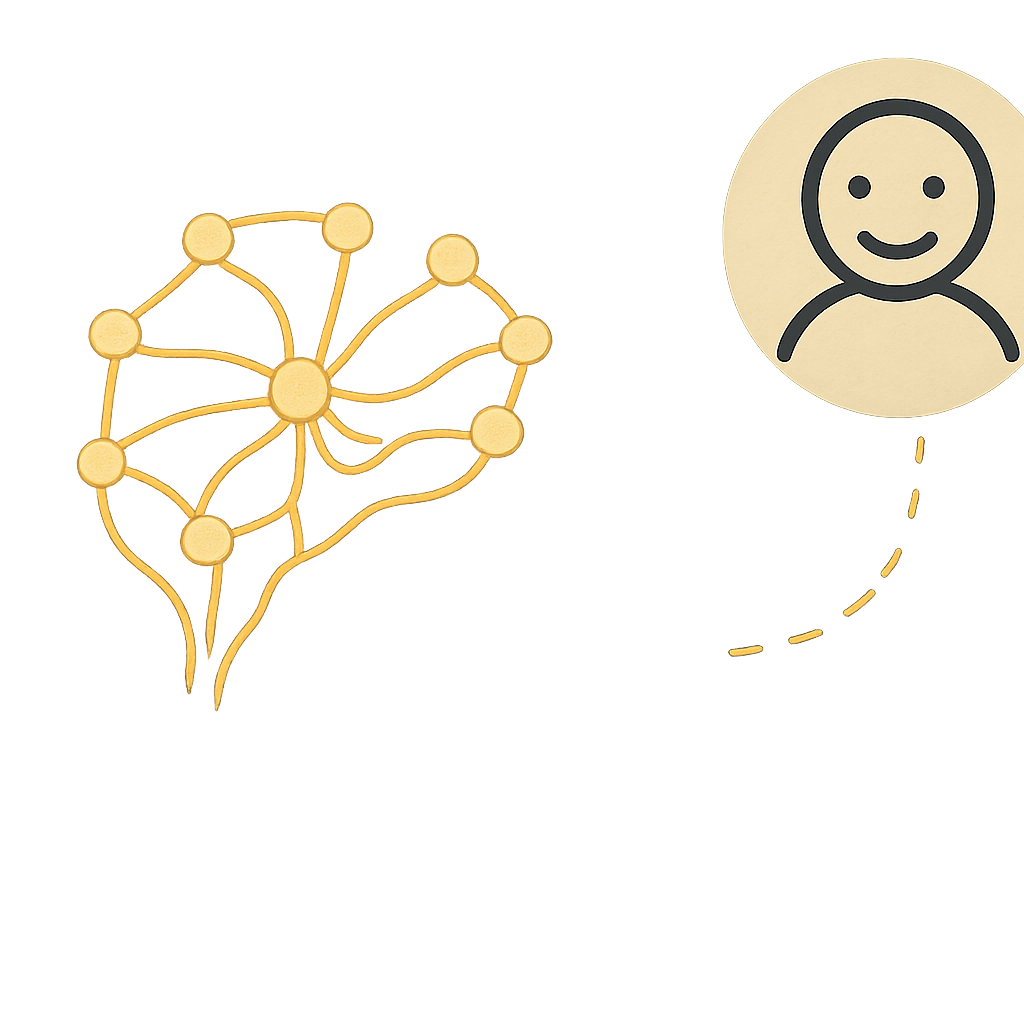Every second, your baby’s brain is a whirlwind of activity, forging up to one million new neural connections that form the foundation for their future skills, emotions, and personality. Your smile, a gentle clap, or an enthusiastic “You did it!” acts like a master architect, guiding which neural pathways strengthen and endure. This process, known as positive reinforcement, is a powerful tool in the first two years, when your baby’s brain reaches 80% of its adult size. By offering timely praise, touch, or encouragement, you’re not just cheering them on—you’re literally shaping who they’ll become.
- What is positive reinforcement, and why does it matter so much in the first two years?
- How is it different from other discipline tools?
- How does positive reinforcement actually “wire” your baby’s brain?
- Which positive reinforcement techniques work best for 0–24-month-olds?
- Sample scripts for common milestones
- How can daily routines turn praise into a developmental super-habit?
- What pitfalls should parents avoid—and how can strategies adapt to every baby?
- Where does the science still have gaps?
- Your top questions, answered
- Final thoughts
What is positive reinforcement, and why does it matter so much in the first two years?
Positive reinforcement involves adding a pleasant stimulus—like a smile, hug, or verbal praise—immediately after a behavior you want to encourage, increasing the likelihood it will happen again. In the first two years, your baby’s brain is in a state of rapid growth, forming synapses at an astonishing rate. These connections, particularly in the prefrontal cortex (for decision-making) and amygdala (for emotions), are pruned based on experience. Positive reinforcement signals which pathways are worth keeping, strengthening neural circuits for learning, social bonding, and self-confidence.
Infants receiving consistent positive reinforcement shows higher engagement in exploratory behaviors, like reaching for toys, by 18 months. This early boost in curiosity and resilience can influence lifelong learning. Unlike punishment, which can raise stress hormones and disrupt neural development, positive reinforcement fosters a safe, nurturing environment that optimizes brain growth. For related insights, explore Baby Language Milestones: First Year Guide.
How is it different from other discipline tools?
| Approach | What Happens | Best For |
|---|---|---|
| Positive reinforcement | You add a reward (smile, cuddle) | Teaching new skills, boosting confidence |
| Negative reinforcement | You remove something unpleasant | Older kids who understand cause-and-effect |
| Punishment | You add something unpleasant | Rarely appropriate for babies |
Babies learn fastest from the first column because pleasant feedback triggers the brain’s reward system without stress. For more on how your home environment amplifies these cues, visit Creating a Brain-Boosting Home for Your Baby.

How does positive reinforcement actually “wire” your baby’s brain?
During infancy, the brain’s plasticity—its ability to adapt and reorganize—is at its peak. Positive reinforcement triggers dopamine release, a neurotransmitter that strengthens synapses involved in the rewarded behavior. Harvard Center: dopamine reinforces infant learning. For example, when you clap as your baby stacks a block, dopamine reinforces the neural pathways for motor skills and problem-solving. Infants exposed to frequent positive reinforcement tend to have dense neural connections in the prefrontal cortex. This is linked to better attention and emotional regulation by age three.
This process, called synaptic pruning, ensures that frequently used connections are preserved while unused ones fade. Your encouragement acts as a “keep” signal, shaping circuits for language, social skills, and self-esteem. In contrast, a lack of positive feedback can weaken pathways, potentially delaying milestones like first words or social smiles.
Balancing activation with calm downtime keeps wiring healthy—see tips in Overstimulation vs. Boredom: Balancing Baby’s Brain.

Which positive reinforcement techniques work best for 0–24-month-olds?
Social feedback beats toys and stickers for infants.
Positive reinforcement is simple, free, and fits into any routine. Here are five ways to weave it into daily moments, tailored to your baby’s age:
- Newborn (0–3 months): Smile and coo when your baby makes eye contact or babbles. Say, “Wow, you’re talking to me!” to reinforce early communication.
- Infant (4–12 months): Clap and cheer (“Great job!”) when they grasp a toy or roll over, encouraging motor skills and exploration.
- Early Toddler (12–18 months): Praise specific actions, like “You put the block in the box—amazing!” to boost problem-solving and vocabulary.
- Toddler (18–24 months): Hug or high-five when they share a toy or say a new word, reinforcing social and language skills.
- Any Age: Use a warm tone and touch (e.g., a pat on the back) to make praise feel personal and immediate.
Aim for 5–10 moments of positive reinforcement per hour of interaction. Timing is key—offer praise within 2–3 seconds of the behavior to maximize neural impact. See Tips for Using Rewards.
Let curiosity lead your practice with ideas from Baby-Led Play: Why Curiosity Boosts Brain Growth.
Sample scripts for common milestones
| Milestone | What to Say & Do |
|---|---|
| First social smile | “I see that big smile! Here’s one right back!” (mirror the grin) |
| Rolling over | “You rolled all the way—wow!” gentle clap near baby’s hands |
| Pulling to stand | “Up you go! Strong legs!” quick hug or kiss |
| First word attempt | Repeat the sound, add the real word, then beam with delight |
How can daily routines turn praise into a developmental super-habit?
Embedding micro-moments of affirmation inside predictable routines multiplies impact.
- Morning care: Narrate diaper changes: “You’re kicking those legs so hard!” reinforces body awareness.
- Feeding times: When baby grips the spoon, note it: “I see you holding tight—that’s teamwork!” Encourages fine-motor control.
- Wind-down rituals: Softly praise self-soothing attempts: “You found your thumb; that helps you feel calm.” Associates bedtime with security.
For a full sample schedule, explore Daily Routine for a Brain-Boosted Baby.
What pitfalls should parents avoid—and how can strategies adapt to every baby?
Generic, nonstop “Good job!” dilutes meaning—be specific and sincere.
Common missteps and fixes:
• Over-praising trivial acts → Reserve big enthusiasm for effort or new skills.
• Treat overload → Shift from material to social rewards by 18 months.
• One-size-fits-all tone → Match temperament: soft whispers for sensory-sensitive infants, lively cheers for high-energy babies.
• Ignoring your own stress → A tense “Great…” doesn’t fool anyone; manage cortisol with tips in Parental Stress: How It Impacts Your Baby’s Brain.
For babies showing early neuro-divergent signs, use immediate, visual prompts (a thumbs-up close to their line of sight) and consult early-intervention specialists.
Where does the science still have gaps?
Few MRI studies track infants younger than 12 months during live praise, so most evidence blends neuroscience with observation.
What parents can do:
• Keep a simple log: note the behavior, your response, and how long before baby repeats it. Patterns emerge fast.
• Share findings with your pediatrician; personal data guides tailored advice.
• Celebrate universality: cultures worldwide—from Japanese baby-wearing snuggles to West African song praise—confirm that warm, timely encouragement is a human constant. Cross-Cultural Similarities and Differences in Parenting.
Your top questions, answered
-
When should I start using positive reinforcement?
From birth. Newborns detect voice tone and touch within hours, so start smiling and narrating immediately. -
How often is “too often” to praise?
Aim for a 5-to-1 ratio of positive to corrective cues, not a running tally. Authenticity outweighs counting. -
Do screens that cheer count as positive feedback?
Human interaction beats digital applause every time. For richer learning, see Screen-Free Parenting: Boosting Active Learning. -
Can I mix praise with gentle limits?
Yes—state the desired action, redirect, then celebrate success. Clear boundaries plus encouragement teach faster than punishment.
Final thoughts
Timely, specific, heartfelt reinforcement fuels brain growth, confidence, and a joyful bond that lasts well beyond the baby months. Keep celebrating each small victory, and explore more brain-smart habits in Baby Routines: Do They Boost Brain Development?. Your loving feedback today is sculpting a curious, resilient child for tomorrow.